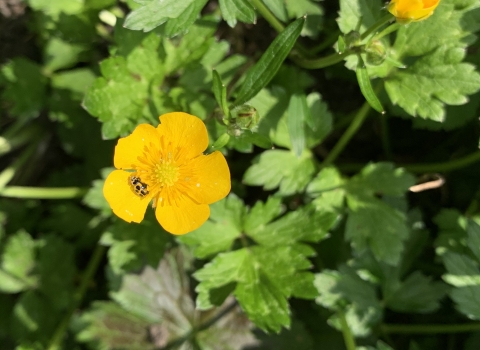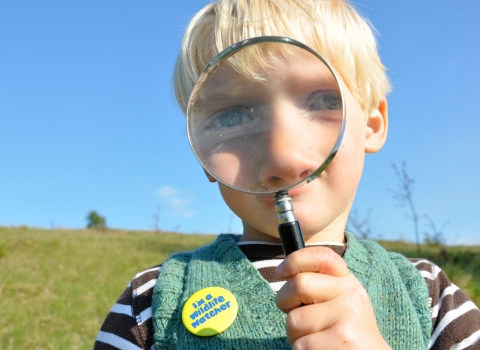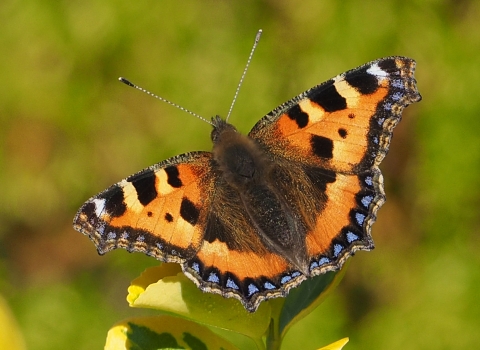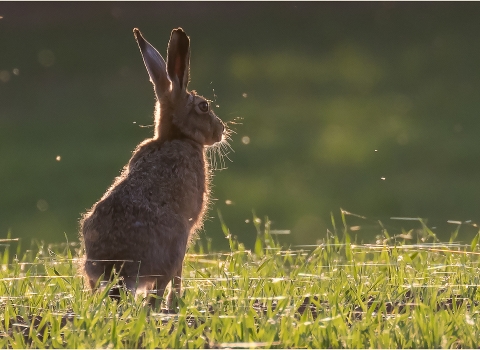Wild immersion in the great indoors
There are so many great nature reads out there to keep you connected to the wild even on a rainy day (or especially in a quiet spot listening to the birds singing and the bees buzzing).
From lyrical words to identification guides, our staff and trustees have recommended some of their favourite nature books.
Books to dip into
Just want to have a book resting on the arm of the chair that you can dip into when the mood takes? Try one of these...
Great Misconceptions: rewilding myths and misunderstandings
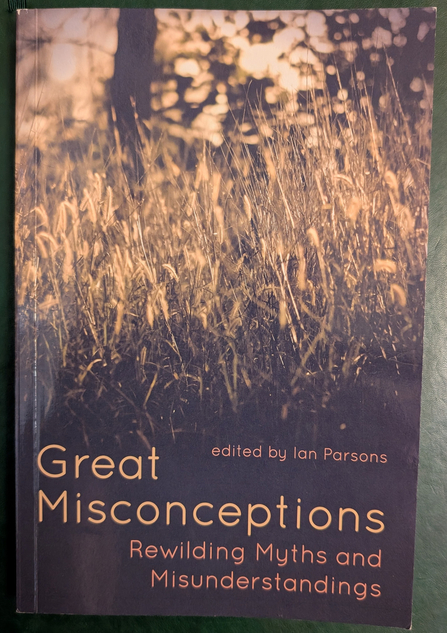
Oddly, for someone who works in conservation, I’ve never spent time reading books on rewilding or other similar conservation projects; I’m more of an identification guide type of person.
My knowledge of rewilding is largely restricted to opinions I’ve heard in the media, to the tune that it will have negative impacts on our rural way of life and be detrimental to existing ecosystems. The 200 pages of Great Misconceptions, edited by Ian Parsons, were quite an eye-opener. Its wide range of contributors look to offer a more encouraging perspective. As the back cover states, ‘this is a book to inform, provoke thought and debate and stimulate conversation about rewilding conservation’ and in my opinion, it succeeds.
If you’ve ever wondered ...would lynx re-introduction be beneficial? ...do we need to plant so many trees? ...can urban areas be rewilded? ...are we too crowded an island for rewilding? ...how diverse the range of conservation effort is that falls under the ‘rewilding’ banner? ...then I heartily recommend picking up a copy. I was rivetted from the start by the authors’ personal perspectives on their own projects and my copy now has copious tabs and notes in the margins. I’m not involved in any way, shape or form in delivering large-scale practical conservation projects but I can appreciate the wisdom and value of so many of the varied approaches.
Ion Riley, Community Warden Officer
The Nature Year - Almanacs
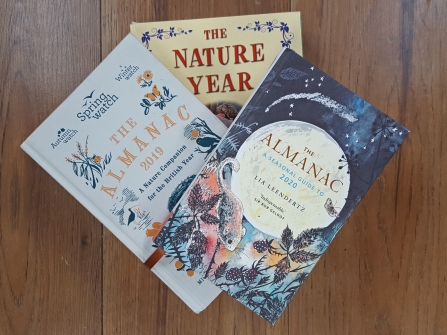
Almanacs, in all their forms, are a favourite of mine. The handbook to the changing seasons – from the phases of the moon to gardening tips to the changing habits of our wildlife throughout the year, they are the perfect way to gain a deeper understanding of the world around us. Though knowing our world we are invited to enjoy a deeper relationship, to live more harmoniously as part of nature. I even have a set of children’s books that month-by-month reveal the goings-on of wildlife around the world, connecting you to the opposing seasonal-struggles of the different hemispheres. The Spring Watch Nature Companion Almanac is a great example of how being better-informed about seasonal goings-on in the natural world helps you to tune-in to the signs all around us, revealing insights into the complexities of a world that is too-easily overlooked.
Emma Wurmli, Volunteer Development Officer
Meadows
This is a beautifully written book with some stunning images. George Peterken illustrates the geography, history and cultural significance of wildflower meadows. In a slightly more unhappy, but realistic, manner the book also depicts the scope with which we have lost such an amazing habitat. Hopefully, with the understanding of the worth of meadow habitats that books like this provide, we might do something about it!
If you want more of this sort of book, then this is the second volume in a new British natural history series, the first being Mushrooms, by Peter Marren. Find yourself addicted to these and you could try Saltmarsh, Heathlands and more.
Yasmina Ashcroft, Nextdoor Nature Engagement Officer
Mindfulness and the Natural World
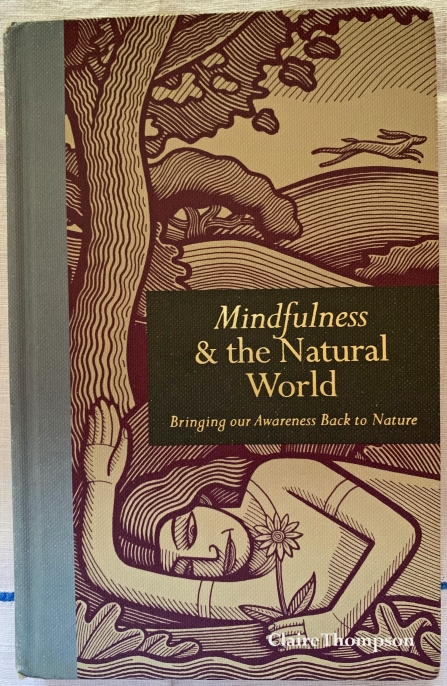
I love books that you can dip in and out of and this is one by Claire Thompson is brilliant for that. It takes you through the importance of nature in our lives and how to notice the interconnectedness of everything around us.
The book is divided into easy to navigate sections and towards the end there are some suggested mindfulness meditations that you can follow.
In a time when we are staying safe at home, taking notice of the small things around us seems to have an even greater importance. From the ants as they scurry across the ground to the birdsong that you can hear, all is part of a whole.
Anne Williams, Membership Development Officer
Insect lives: stories of mystery and romance from a hidden world
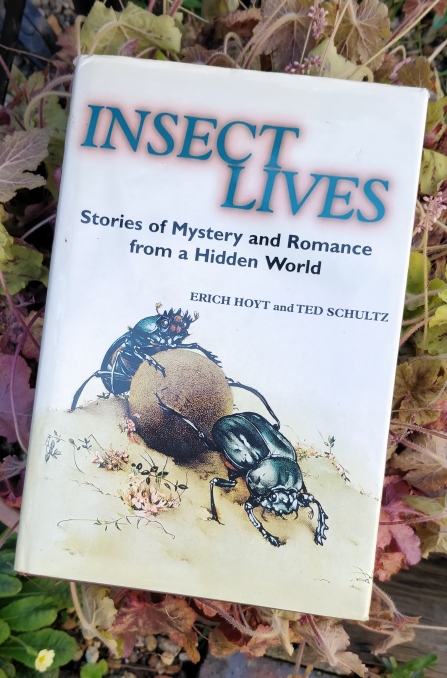
If you are a naturalist with a particularly inquisitive mind and a love for literature, anecdotes and a good dose of humour then I urge you to indulge yourself (who doesn’t deserve it at the moment?) and ask your local bookshop to order this in for you. It’s a collection of articles on insects with such curious essay titles as ‘the courtship gifts of balloon flies’, ‘murder by narcosis’ and ‘the tenderness of earwigs’.
As suggested by the titles, many of the writings are very in-depth on particularly niche subjects but the majority are written in a very readable style. Who doesn’t want to know about a university’s thoroughbred cockroach racing championship using custom-built tracks! Interspersed are 17th century illustrations of bed bugs, Gary Larson cartoons and poetry dedicated to headlice. This is a wonderful gift of a book.
Eleanor Reast, Eastern Reserves Officer
The Wild Remedy
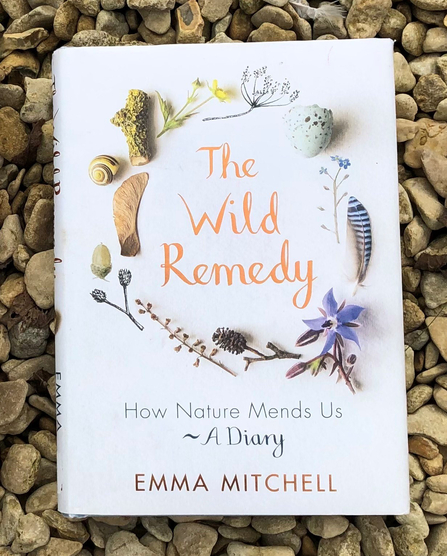
As the clocks change and the grey clouds start moving in, it is all too easy to feel a little glum; the hedgerows full of dull, decaying leaves, trees stripped down to their bare branches and the ground more mud than anything else. However, this book provides a good reminder that there is still solace to be found in the natural world, not just in the colourful springtime but all year round!
Emma Mitchell has suffered with depression for decades, the only thing to soothe her is the humble outdoors. Sometimes it is watching the birds from the kitchen window, other times it is witnessing the much-anticipated starling murmuration at a nearby nature reserve. Her year-long diary is enhanced even more by the beautiful illustrations and photographs taken during her journey. A perfect example of how the great outdoors impacts on mental wellbeing.
Ruthie Cooper, Conservation Trainee
Shorter reads
Don't have long but need something to connect you to the wild. Take a look at...
The House Without Windows
This beautifully 'natural' book was written by a 12 year old Barbara Newhall Follett in 1926. It follows the story of Eepersip who runs away from home to live in and with nature. her heartbroken parents try to catch her to bring her back home but Eepersip is having none of it. She lives in the meadows before adventuring through mountains and learning the ways of the sea.
The enchanting story immerses you in the natural world in, perhaps, the way only the imagination and innocence of a 12 year old can... "A butterfly flew over her head...a little yellow butterfly who danced and glimmered before her. Her brown eyes sparkled with delight. A cricket hopped and twittered; a bird burst into song. Almost without knowing what she did, Eepersip leaped into the air and began to dance, with the swallows circling above her head and the leaves fluttering about her."
A new edition came out in 2019, complete with beautiful illustrations by Jackie Morris (one of our Wildlife Heroes).
Wendy Carter, Communications Lead
Guests of summer, a house martin love story
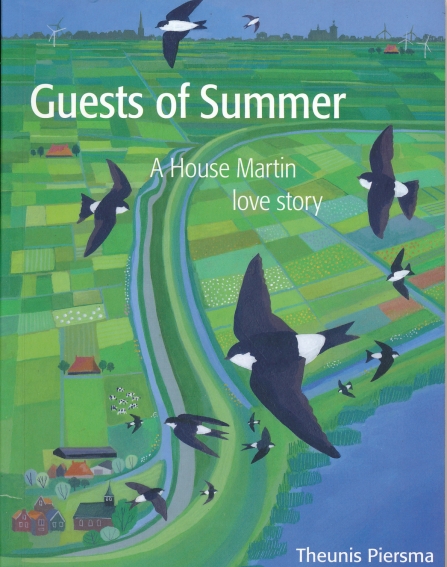
Many of us scan the skies for returning swifts, swallows, house martins and sand martins and 2020's April and May with amazingly fine weather has been a great encouragement to look skyward. Will they return? Will my house martins come back?
I am very fond of this little book by Theunis Piersma: Guests of summer. A house martin love story. Originally written in Frisian (an old language akin to Old English), translated into Dutch then converted to English, with additional British material, it is a unique gem of a book. Look at some of the chapter headings: mud cottages and clay thieves; sex and violence; martins in infancy; insect-eating orcas; Shakespeare and the sweet smell of dung, migration secrets revealed! The author is an internationally well-known ornithologist who studies waders and other birds on bleak shores but this book is about watching the house martins nesting on his house in summer sunshine and discovering what they do. Behind it all is readable science that reveale many secrets. Published by charity British Trust for Ornithology it is available via their website.
Harry Green, trustee
The Private Life of the Hare
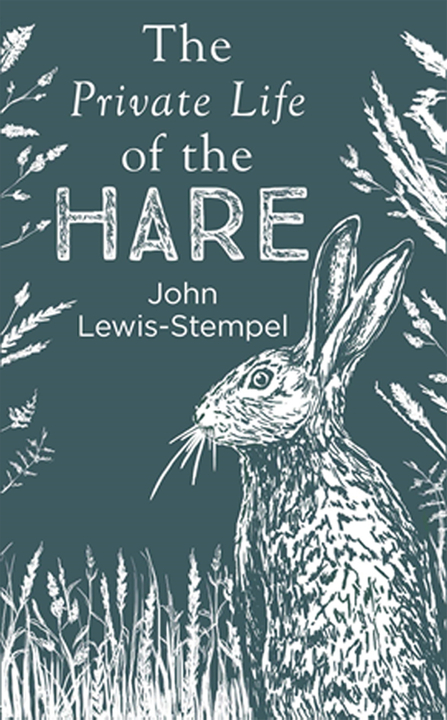
John Lewis-Stempel’s initial encounter with a hare in his childhood kindled his lifelong interest in these fascinating creatures. His narrative and descriptions are succinct yet in awe and it is this style that engages the reader’s curiosity.
In barely 100 pages John Lewis-Stempel describes the hare’s habits, distribution, myths and legends with a subtle cautionary note against ‘the reckless greed of man.’
This delightful book is both edifying and underpinned by a deep admiration and respect for the enigmatic hare. I would recommend it: for after reading it you might feel you had been for a walk across the fields with a straight-talking farmer marvelling at an elusive and magical creature.
Janet Morris, Sessional Tutor
The Offing
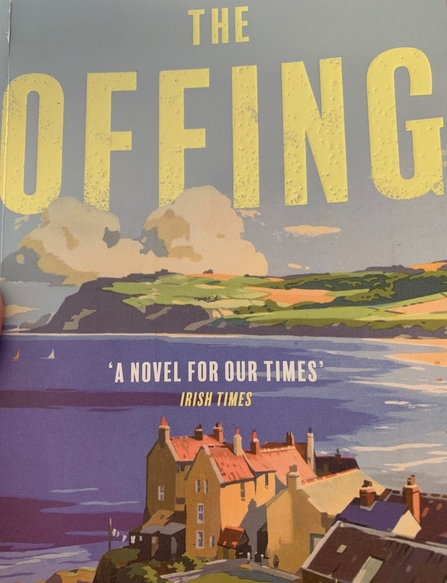
Set just after the end of World War 2, this follows the journey, on foot, of Robert Appleyard from his home in a Durham village to Robin Hood’s Bay. He is 16 years old and is trying to make sense of his life before becoming a miner like his father. He has always been fascinated by nature and the outdoors and found it hard to concentrate in school. At Robin Hood’s Bay he meets Dulcie, an older woman who opens his eyes to the joy of poetry. It is the story of one summer that shapes the rest of his life.
I loved Benjamin Myer's book; it is full of descriptions of Robert’s journey and what he finds in Robin’s Hood Bay. There is one scene where he wakes up and there is a badger near where is sleeping which is beautifully written. It is lyrical and full of the joy you can find being outdoors and how nature can mould you in a myriad of ways. At just over 250 pages, it’s not long and definitely worth reading!
Anne Williams, Membership Development Officer
The Snow Geese
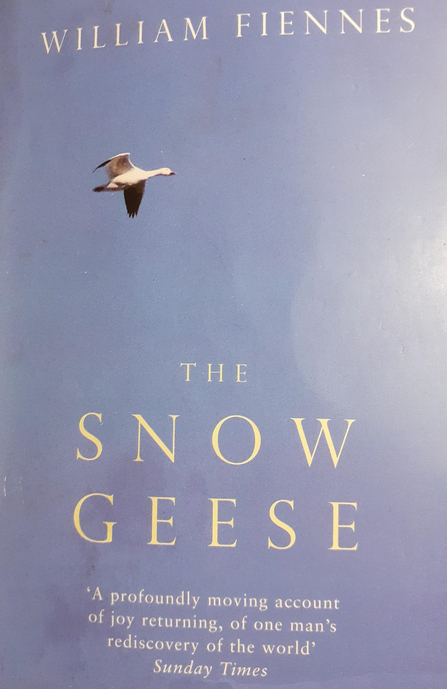
This beautiful book is about healing. Triggered by a life-threatening illness, William Fiennes takes himself on a journey to follow the migration of snow geese from the southern USA to the Arctic tundra. It references nostalgia and homesickness, cleverly drawing parallel with the urge of these magnificent birds to migrate to the need of Highlanders to see the hills and hear the bagpipes. As part of society’s healing and adapting to the past 18 months and learning to live with a future that includes Covid, I feel that this kind of nostalgia will surface within us. We must hold onto the hope of seeing the snow geese.
Caroline Corsie, Senior Land Advisor
Oh, the place you’ll go! By Dr Suess
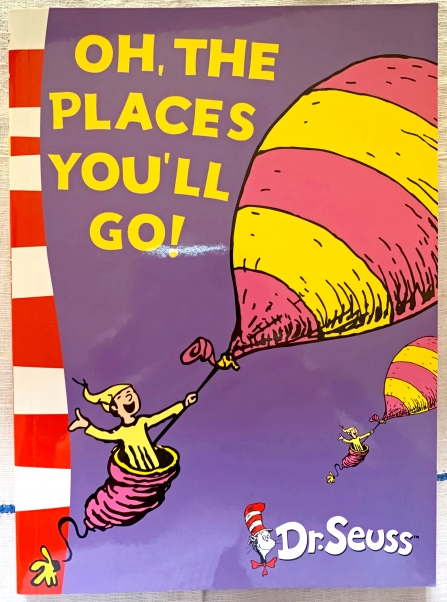
While not a strictly nature book, this is about dreaming of all the places you can go “in the wide open air” and all the things you can do. It’s fantastical, like most Dr Suess, and easy to read with little or bigger ones. (I read it at least once a year and I’m 56)!
The hero in the book could be a bee or an ant or a butterfly and their whole world is your garden – where will their adventure take them? Why not watch and see!
Anne Williams, Membership Development Officer
Longer reads
Want to sit in your favourite, most comfy, spot and immerse yourself in the natural world? Let us help you...
Groundbreakers: the return of Britain's wild boar
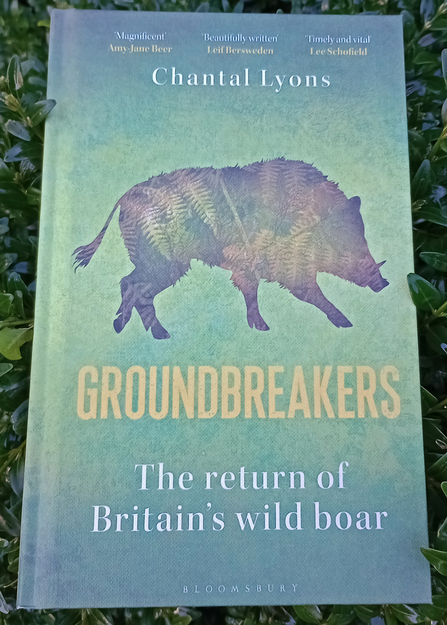
The winner of the British Ecological Societies ‘Marsh Ecology Book of the Year 2024’, this wonderfully written book covers all things boar, from ecology to local politics.
Chantal Lyons’ thought-provoking book, mainly focused on the population of wild boar in the Forest of Dean, Gloucestershire, tries to paint a balanced picture of how boar influence the world around them. Through meeting a wide range of people, from Forestry England rangers to local farmers, viewpoints from boar lovers and haters come together to show how the boar can coexist with local people and be a vital part of the ecosystem. Lyons also explores lessons learnt from other existing and extinct boar populations, including in Galloway, Sussex, Kent and even the Loire Valley in France.
As a resident of the Forest of Dean (although not yet a local), I quite often peer out of my bedroom window at night to see a mother sow leading a troupe of ‘humbug’ piglets down the road. The sense of awe and amazement hits me every time upon seeing such magnificent creatures, and the details of the book cement how intelligent and wonderful boar really are. I have also heard Lyons talk about her book and her experiences in the forest whilst writing; she is an excellent speaker and I would encourage you to attend her talks should she do one local to you.
My signed copy of Groundbreakers sits proudly on my bookcase and is an excellent nature read for anyone interested in the interface between ecology and societies’ relationship with nature.
Finley Reynolds, Natural Networks Officer
12 Birds to Save Your Life

The day Charlie Corbett receives news he never wanted to hear is also the day he starts his journey back to nature. It is the universal experience of grief and hopelessness woven through with the golden threads of solace, joy and hope that only the natural world can bring. Told through the prism of 12 birds, it is a plea for us all to pay attention to the rhythms of the natural world around us and allow it to help us put our own problems into perspective. It is wise, lyrical, confiding and often funny, and I loved how my own thoughts and feelings chimed with those of Charlie. It is ultimately a book of connection and gratitude, and I hope you enjoy reading it as much as I did.
Sandra Young, trustee
The Garden Jungle: Gardening to Save the Planet
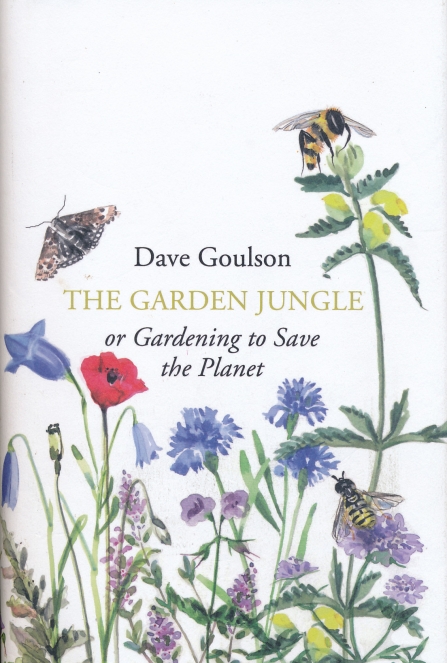
The combination of COVID-19, lockdown and an unusually warm and sunny April have brought out legions of gardeners. Jobs left for years have been done, mowers have been out in force and those plants that live with us whether we like them or not – the weeds – have had a tough time. Are you a wildlife gardener and what does that mean? If you want to really grasp the – eh - nettle then read Dave Goulson’s book The Garden Jungle or gardening to save the planet. It is very well written, entertaining, stuffed with genuine facts based on science, full of insights on many things from worms to flies to ants to bees to compost, moths, snakes and even young environmentalists nearly burning down the garden shed!
Read it and be changed!
Your garden will never be the same again, whatever its size, and you will want to enjoy gardening to save the planet.
Harry Green, Trustee
Wilding
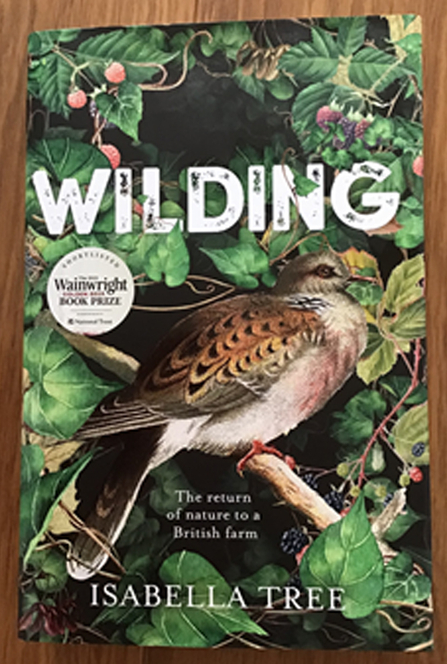
I believe that Isabella Tree's ‘Wilding’ should be required reading for everyone - in schools, at colleges and universities - as testimony to what can be achieved where there is a will to do so. In a nutshell, the owners of the Knepp Estate undertook a giant experiment to ‘rewild’ their land, allowing natural processes to take over and in so doing recreate nature’s regeneration of the landscape as opposed to man’s imposed control of the landscape. This is ‘natural history’ taken literally, returning nature to its own evolutionary process.
This book puts into sharp relief the outcome of man’s short-sighted recklessness and profligacy and contrasts it with the importance of appreciating the minutiae of eco systems. The Burrell family of the Knepp Estate not only espouse an alternative ideology of caring for a landscape but actively transform their farm to prove that the alternative is viable. Isabella Tree documents the administrative processes involved as well as the practical work so diligently carried out in order to fulfil their ambitious, controversial yet passionately held vision of the future of their farm.
‘Wilding’ is painstakingly well written, flowing melodiously like a stream of crystal clear water and articulate to the finest detail. Here I must confess it took me a while to ‘get into’ the narrative because it was almost too perfect but I soon discovered that every introduction, experiment and lesson learned was backed up by science and it is this that gives the book its strength. The reinforcement of the science behind the ideas, the input of the experts from around the world are both reassuring and enlightening. The ‘Sources’, ‘Bibliography’ and indeed even the index transform the book into a creditable reference for further reading on what must surely become an ever more pressing subject for debate and discussion and most importantly action.
Janet Morris, Sessional Tutor
Dancing with Bees - a journey back to nature
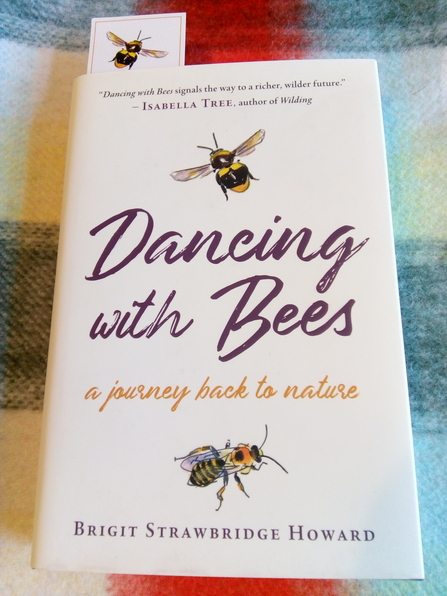
One day as she walks to work along the Malvern Hills Brigit suddenly realises that she knows more about the French Revolution than she does about our native trees. The thought stops her in her tracks. So her journey back to nature begins and she takes us along with her as she delights in re-connecting with the natural world and bees above all.
The writing is fluent and eloquent and, quite literally, brimming with life and the wonder of life all around us. It is about learning to notice, being curious, wanting to understand and finding joy in the detail. You will learn so much about bees, and other wild things, as you share Brigit’s journey. Bees are complex, fascinating little creatures; we need them, they need us and we can all do our bit to help them.
This is a charming and rewarding read which finishes with reflections back in Brigit’s beloved Malvern Hills, a call for us to look inwards and begin the process of rewilding ourselves. I’m all for that!
Sandra Young, trustee
Where the Crawdads Sing
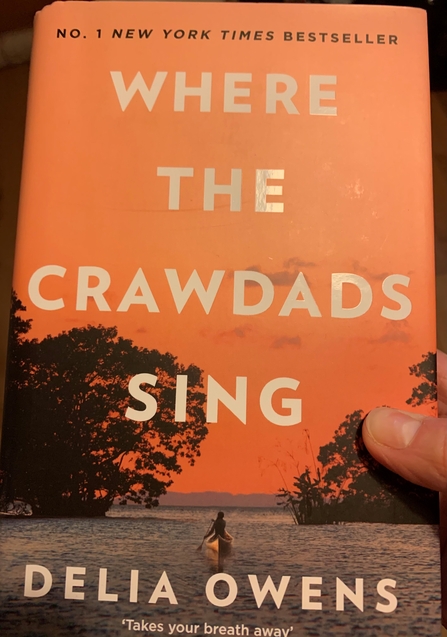
This book follows a young girl called Kya, who lives in the marshes of North Carolina in 1950s-60s. Abandoned and isolated from society, she is known as the ‘marsh girl’ by the locals living in nearby Barkley Cove. Teaching herself about the marsh and taking life lessons from the land, she is uniquely intelligent, watchful and quiet, a collector and curator of natural treasures. Her only friends are the gulls and animals around her, until she meets two young men.
When Chase Andrews, a popular local boy is found dead under suspicious circumstances, there is only one person that is accused of his murder – the ‘marsh girl’. The heart-breaking loneliness and prejudices Kya faces are constant throughout the story but alongside the beautiful, poetic descriptions of the marsh and the natural world around her, it makes this book very difficult to put down and I absolutely loved it.
“She knew the years of isolation had altered her behaviour until she was different from others, but it wasn't her fault she'd been alone. Most of what she knew, she'd learned from the wild. Nature had nurtured, tutored, and protected her when no one else would.”
Jess Vukovic, Ecologist
Feral: Rewilding the Land, Sea and Human Life
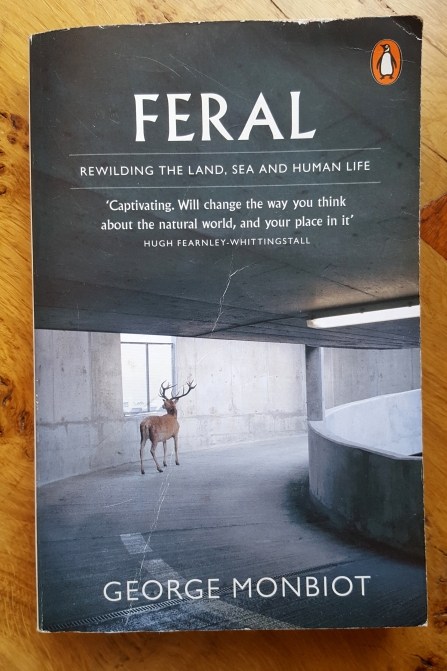
I love an author that pushes buttons and challenges the reader to think differently about our world, our actions and our influence. I’m confident that for most people George Monbiot fits the bill! Feral forces the reader into the limelight of our climate and biodiversity crisis and challenges you to dream in a better way of living. From raw accounts of ecological decimation to stories of hope of nature’s recovery, this is a rollercoaster ride of well-researched writing. Monbiot urges us as environmentalists to turn the table from what we are against, to what we are for, a desire to encourage a ‘positive environmentalism’. However it leaves you feeling at the end, you will be feeling something…a call to action…let’s answer it together.
Emma Wurmli, Volunteer Development Officer
Walden; or, Life in the Woods
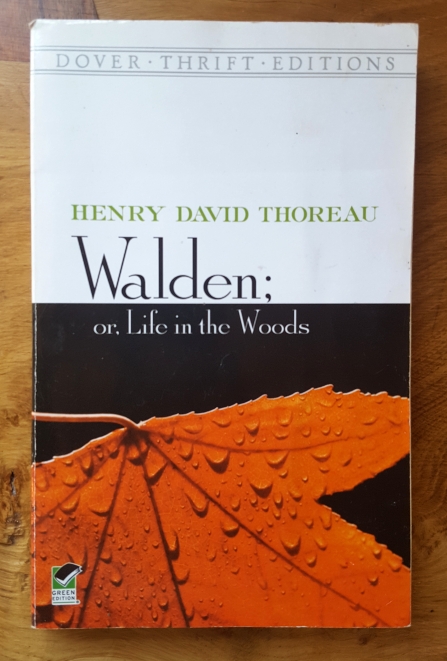
If you are not familiar with Thoreau’s work beyond the myriad of quotes that pop up everywhere whenever you are reading almost anything with an environmental basis, then you need to read this seminal work. Thoreau reflects on living the simple life on the shores of Walden Pond, New England, through the seasons during the mid-1800s but this is so much more than an account of his day-to-day life. A perfect blend of the joys of the simple life are contrasted with his insightful laments of the human condition, still so relevant today. Thoreau’s work has influenced environmentalists and activists (including Gandhi) for generations, there are lessons and musings for everyone in his words. Immerse yourself, for as Thoreau says ‘we need the tonic of wildness […] we can never have enough of nature’.
Emma Wurmli, Volunteer Development Officer
Miss Benson's Beetle
An uplifting novel about a search for a beetle that may or may not exist in the mountains of New Caledonia, a mismatched pair of travelling companions who find strength in their differences and the importance of taking opportunities when they're offered.
It may be a fictional story of the hunt for a golden beetle but Rachel Joyce has done her research into beetles, what it means to search for elusive wildlife and the world of explorers. Miss Benson's Beetle tells the story of Margery Benson who, in a lightbulb moment, decides that teaching is no longer her future. She advertises for an assistant to help her find a beetle that she once saw in her father's books when she was s child. Thus ensues a humorous, exciting and wild adventure to the other side of the world. Will Margery's assistant Enid make it to new Caledonia, what lessons will be learnt, will their shadowy follower be discovered and, most importantly of all, will Margery find the beetle that she so wishes to be named after her father? It's as much about human relationships as it is about beetles but dive into the Margery's world and you'll come out equipped with knowledge of both.
Wendy Carter, Communications Lead
Mozart's Starling
Written by an American ornithologist, Lyanda Lynn Haupt, the start of this book made for uncomfortable reading. Starlings were shipped to the States in the 19th century and have since run riot - they're detested by Americans for the way that they've invaded the natural world. As such, it's legal to control their numbers in pretty much any way possible and when the author heard of a nest that was going to be destroyed she decided to rescue a nestling in order to help with the writing of this book - investigating the relationship of Mozart with his pet starling, Star. Putting aside the rights or wrongs that a reader may feel about raising a wild bird in a domesticated situation, the book not only looks at the lives of wild starlings through observing the behaviour of one being raised by a human family (who love her very much) but it also takes a different look at Mozart's life.
I admit that I knew very little about Mozart and I certainly didn't know that he owned a starling. He allegedly bought the bird because it sang a phrase that he'd composed but as the author takes you through research and conversations, you realise that perhaps the starling had more influence on Mozart's work than the composer had on the bird. This isn't a spoiler alert but when I reached the end of the book, I had to look up the author on Twitter to find out whether her starling, Carmen, was still alive. It would be a spoiler to tell you the answer!
Wendy Carter, Communications Lead
The Running Hare
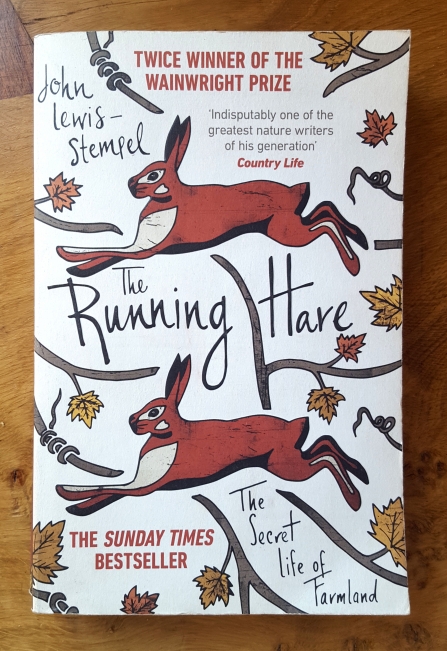
From the moment I thumbed through the pages of The Running Hare, my first Lewis-Stempel, I was converted! Not only is this book set in the rural Herefordshire of my youth (meaning that I spent most of the book nostalgically imagining my father walking those fields) but it goes straight to the root of what it means to be a part of nature. Lewis-Stempel’s writing is witty, evocative and compelling, moving from the poetic to the poignant and oh-so needed right now. I defy you to read this stunning account of our natural world and not to come out the other side with even more fascination for your own doorstep wildlife. We are all capable of bringing about a better world through how we consume and the actions we take to live more harmoniously with nature, whether it’s a window box, a garden or a whole farm, as Lewis-Stempel puts it ‘One field, just one field, made a difference. If we had thousands of fields…’
Emma Wurmli, Volunteer Development Officer
A Natural History of Dragons
I almost feel like I'm cheating by adding these books into our recommended nature reviews! However, whilst they're not a UK species (or even a species at all), the books have everything you need for learning how to go about recording the natural history of anything.
This series of six books by Marie Brennan follows the adventures of the no-nonsense Lady Trent, the pseudo-Victorian world's pre-eminent dragon naturalist. She travels far and wide, across continents and from mountains to swamps, in order to discover, record and conserve these wondrous beasts. The books are written in first person as Lady Trent recalls her escapades in her diaries. With imagined natural history, adventures, intrigue, a touch of steampunk and a dab of romance, what's not to like?
Wendy Carter, Communications Lead
Help with identification
Spotted something that you don't recognise? Don't know where to begin finding out? Perhaps we can help...
Britain's Hoverflies
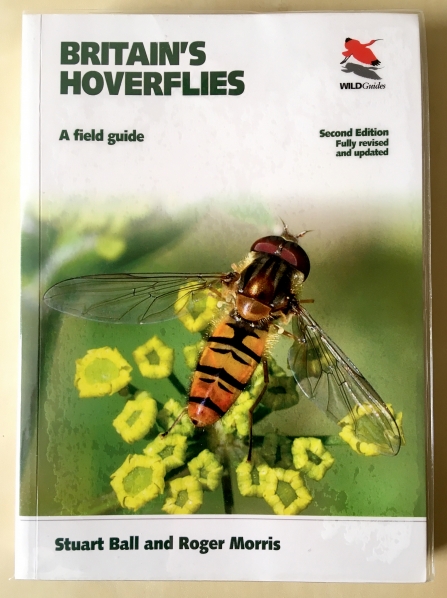
I have an introvert’s love for the small and esoteric. I also enjoy the challenge of seeking out and identifying those animals that live right under our noses, often overlooked in our gardens or local greenspaces. Many of them play important roles in the ecological processes on which we rely and I reckon they deserve a bit more love. For me, hoverflies exemplify this and Ball and Morris’s ‘Britain’s Hoverflies’ offers a window into their world that cannot be beaten.
Starting with introductory sections on what hoverflies are, their very variable lifecycles and when and where to look for them, the bulk of the book offers an identification guide to the more obvious species we might come across. There are some great rarities covered too and the authors are rightly keen to point out that many of the 280+ species cannot be identified without a microscope and considerable skill. Nonetheless, the guide is incredibly accessible for beginners like me and offers straightforward help with species that can be successfully worked out in the field or from photographs. As the front cover demonstrates, not all flies are tiny and dull and in fact it’s the myriad forms, variable fluffiness, patterning and size differences that make this picture-led guide so good to dip into. Each species is well illustrated with photos and there are accompanying maps and text to help sort one from the other.
I suspect many would guess that flower-visiting flies would be important pollinators but along the way Ball and Morris also explain that numerous species have larvae that actively hunt aphids (not a bad trick when you realise they have no eyes or legs), that some adults are excellent mimics of stinging insects and that others are cavalier enough to penetrate ant and wasp nests to lay eggs. The book is good at demystifying the occasionally challenging names and features (what’s not to like about an insect that can be securely identified by the ‘batman’ symbol on its back, for example) and though some groups remain a challenge the guide does an amazing job of making identification of many much easier than expected.
All in all, if you think you might want to know more about the flies that defend a cube of air from all comers, that breathe through a tube four times their own body length, that eat aphids farmed by ants inside ants nests or that migrate in large numbers from Europe to Britain, this is probably a book for you.
Steve Bloomfield, Senior Conservation Officer
Field Guide to the Bees of Gt Britain & Ireland
If you've got even the slightest interest in taking a closer look at the bees in your garden, I can't recommend this book highly enough. Steven Falk really does know how to communicate this fascinating world with beginners and experts alike. With lots of really useful identification information as well as what habitats to look for and relatively up to date distribution maps, not to forget the beautiful illustrations by Richard Lewington.
There is a key to help you work your way through the identification features (is the thorax heavily pitted, for example) but you can just as easily check the illustrations and flick between the accounts of the most likely species or browse through the photos for each species and then read more about the bee.
Almost as soon as a guide is published it's out of date and there are already a few new species to the UK that aren't mentioned but you can keep up to date with that side of things at Steven's fabulous Flickr pages that provide a very helpful accompaniment to the book.
Wendy Carter, Communications Lead
What's that bumblebee?
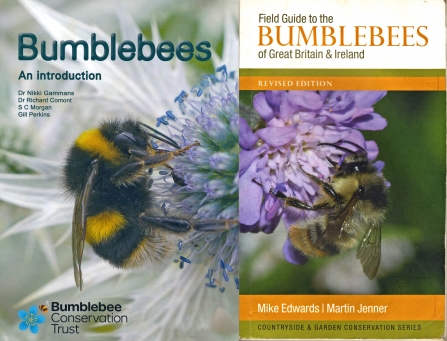
Big queen buff-tailed bumblebees are obvious in spring as the queens zoom around searching for good nesting holes in the ground and for nectar from early flowers. Identifying bumbles is a challenge but there only 24 species and actually only about 10 that you are likely to see in spring. Spring is also a good time to start trying to identify them before they get worn by the hard work of tending a nest as well as being bleached by the sun.
There are two little books that are good for getting started. A small “Field Guide to Bumblebees” by Edwards and Jenner has photos of males and females and text giving points to look for. “Bumblebees. An Introduction” by scientists from the Bumblebee Conservation Trust has more information about their lives and a key to help in identifying them. There are lots of helpful pictures. Face the challenge and have a go! They are lovely things and the more you know about them the more you can help conserve them. All are threatened and declining - they need flowers for pollen and nectar as well as needing pesticides to be kept far away from them (you can find more about this on our Action for Insects page).
Harry Green, trustee
Insects of Britain and Ireland
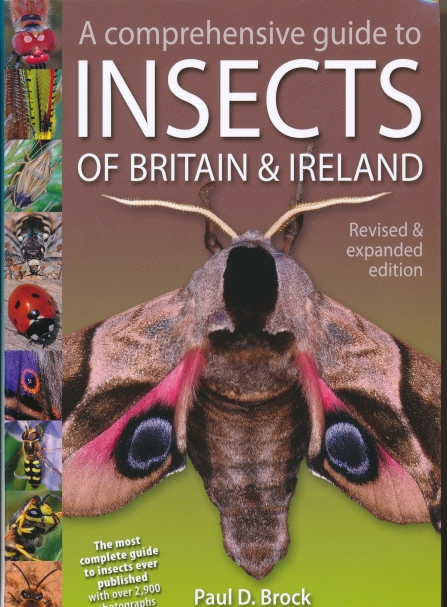
I started years ago with “An insect book for the pocket” – at last I would be able to name these things I was spotting; but the ones I wanted never seemed to be there. More field guides followed, promising everything: 'Complete Guides' and similar titles but often the problem was the same; the one I wanted wasn’t there. Of course there are many thousands of insects living around us, many of them very small, and identification of species in some groups is hard work with specialist keys and a microscope. Most flies are like that, also thrips, caddisflies and more.
A recently published book goes much farther than any predecessor “A comprehensive guide to insects of Britain and Ireland”, illustrated with nearly 3000 photos by Paul Brock. The second edition (2019) is the best yet and the best you can get as a general guide. It gives you a better chance of naming that insect or at least finding out whether it’s a bee, beetle, grasshopper or fly and which family it belongs to. You will have made a start into the wonderful world of entomology. Not perfect, there are more specialist books, but a good help on the way.
Harry Green, Trustee
For the young (& the young at heart)
Have younger readers in the family or want to rekindle your childhood? Perhaps one of these recommendations will hit the spot...
Peep Inside a Tree
A beautifully illustrated short exploration of the life-cycle of an oak tree from an acorn to a large home for nature. Featuring insects, squirrels, birds and full of fun flaps to lift and discover. Ideal for young nature-lovers up to the age of about six or seven.
Jo Kelly, Membership Officer
The Ingo Chronicles
The Ingo series from the late (and great) Helen Dunmore feature four main books with two follow-on books.
They're best for over-12s but are loved by many people of all ages. They're about a family in Cornwall and their connection with the local land & seascape. The family discover their Mer heritage and learn to live in Ingo - the sea with the Mer. Here they learn that no society is perfect and that the land has its own power. They see the consequences of human activity on the two realms & try to make amends. For me and my family it evokes the beautiful landscape and seascape of the far west of Cornwall and its a delight to be immersed in this when stuck in land-locked Worcestershire!
Mary Bendall, Sessional Tutor
Don't forget to pop back for more recommendations - we'll be updating it regularly.

